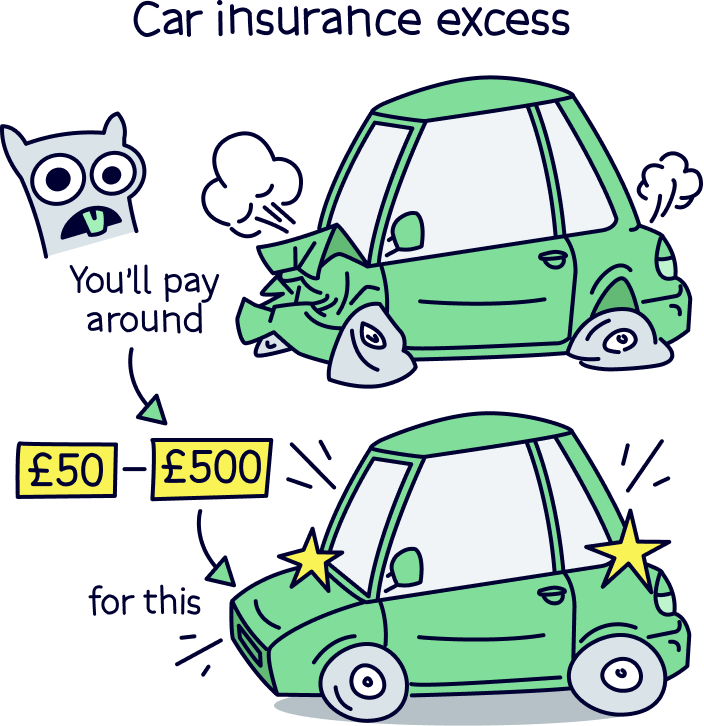
Article contents

The excess is the amount you’ll pay out yourself if you ever claim. There’s normally a compulsory excess which you have to pay, and a voluntary excess which you can set when you buy the insurance – the higher it is, the less your premiums are.
When sorting out your car insurance, you’re probably going to see the term ‘excess’ frequently popping up. But what exactly is car insurance excess, and what do you need to know before agreeing to a policy? Read on to find out.
Your car insurance excess is the amount you’ll agree to pay towards any claims on your insurance. We say agree, but it’s normally a requirement for taking out insurance on your car. So, if you’re ever in an accident and need to claim on your insurance, you’ll also be paying out some money too. Annoying!
It’s to lessen the risk for insurance companies and reduce false claims, as well as stopping you claiming for minor damages, as you’ll likely be paying at least £50, but can be up to £500 and sometimes more.

Did you think insurance people were nice people? Nope! It’s all about getting as much money off you as possible!
It’s get even more complicated, there are actually two different types of excess, compulsory excess and voluntary excess.
Compulsory excess is an amount set by your insurance provider, and this can’t be changed. This is based on a few different factors, including:
Your voluntary excess can be adjusted, and this is where you’ll need to do some thinking, as the higher your excess the less your premium typically is, and the lower your excess, the higher your premium us. Your premium is just a fancy word for the cost of your insurance.
It’s all down to the risk of the insurer again, and if you did make a claim, they would be paying out less themselves, so happy to give you a discount on your premium.
In the world of car insurance, paying a slightly higher excess can have some benefits.
You might find that claiming for less than £500 worth of damage isn’t really worth it – as making a claim can increase the cost of future insurance policies, and could end any no-claims bonuses. So, you’d actually lose out over the long run as your future premiums would be more expensive, and cancel out the money saved now.
You might also find that excesses of £1,000+ significantly reduce the cost of your insurance premiums, which can save you money. However, if you do ever need to make a bigger claim, you’ll need to pay out a bigger amount.
If you consider yourself to be a safe and experienced driver, then you might want to decide on a higher voluntary excess to reduce your premiums. However, accidents can happen to anyone – so always make sure you can afford to pay out.
All you need to do then, is decide a figure you’re comfortable with should anything happen to your car and you need to claim, and then see how much discount you’ll get with that figure. You can normally enter this into a simple calculator when you’re buying the insurance online.
Unfortunately, this does happen a lot. But it doesn’t provide you with much protection right away, you’ll still need to pay the agreed excess on any claims you make, but if you’re claiming off another driver (and the incident is proven to be their fault) you’ll usually be reimbursed.
If you’re involved in an accident with someone without insurance, you’ll be able to claim from your own insurer if you have comprehensive cover. However, this will mean losing your no-claims discount.
Setting an excess that you’re comfortable with is an important part of finding the right car insurance deal – but there are a lot of other factors.
You should also consider the different types of car insurance available (third party, comprehensive, etc) and any add-ons (like ‘Driving Other Cars’ cover). The main thing is to ensure that the insurance policy is going to cover everything you need.
For more guidance on finding the right car insurance, here’s how to find the best deal for new drivers.
So there you have it. That’s our whistle-stop tour of car insurance excess. Always make sure you’re providing accurate information to your insurer, and most importantly, always be confident that you’re able to afford your voluntary excess.
We’d love to hear from you, and it will help others too.